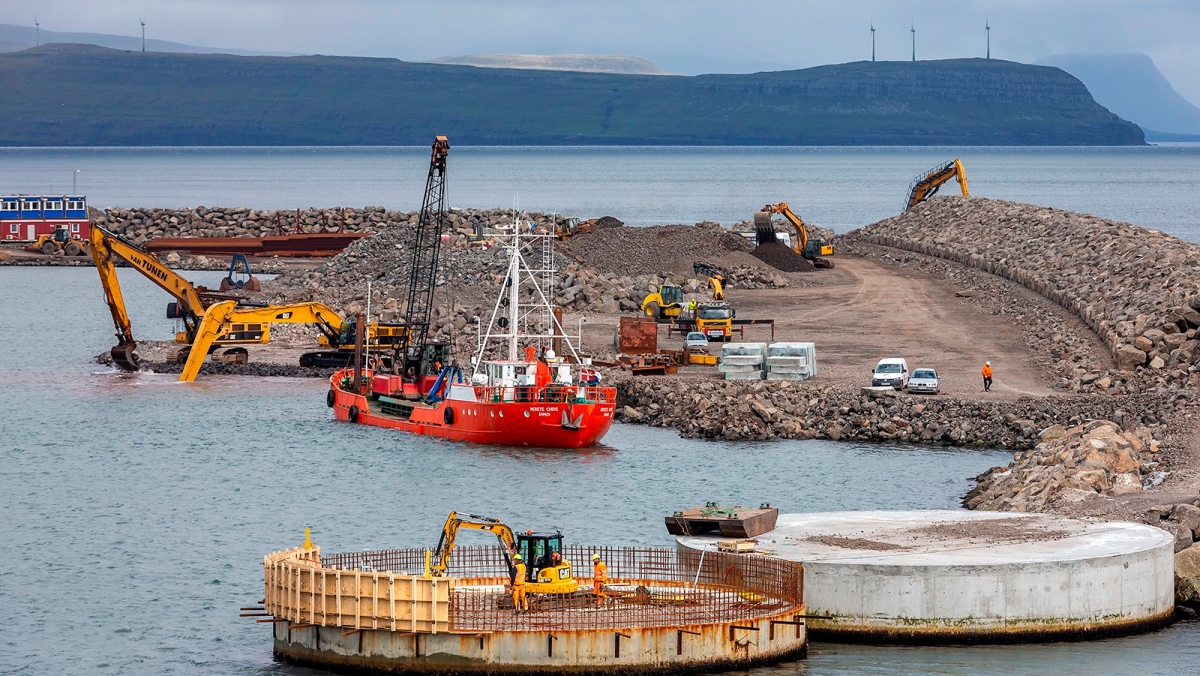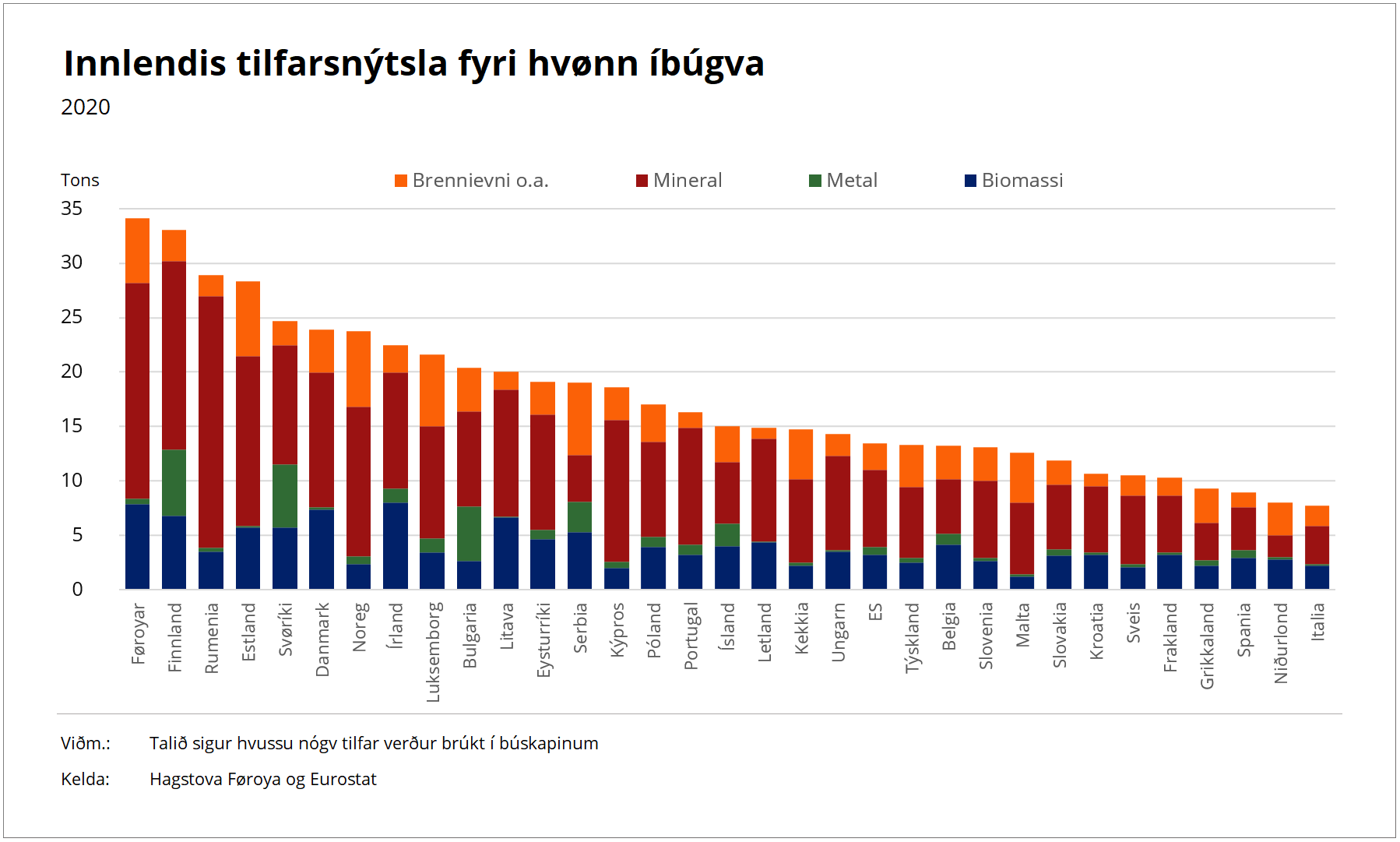Material flows
24. Jun 2022
Faroe Islands use large quantities of materials

Statistics Faroe Islands has begun compiling data on material consumption in the Faroese economy.
Materials consumed in the Faroese economy are either imported or extracted domestically. The materials that are not exported are used in the local economy.
Of the domestically extracted materials, only resources that are extracted directly from the environment, e.g. caught fish, stone and grass, are included. To avoid duplicate counts of materials – sheep and farmed fish, for instance – are excluded since these consume a combination of imported and domestic materials.
Most of the domestically extracted materials fall into the biomass category. In 2020, 700,000 tonnes of biomass was extracted from the environment, including Faroese fisheries plus some straw and grazed biomass. 232,000 tonnes was imported, including foodstuffs, fodder and timber. 517,000 tonnes of biomass was exported. This means that 416,000 tonnes was used in the Faroese economy.
The second-largest category is non-metallic minerals. The table below shows that 482,000 tonnes of non-metallic minerals was extracted from the Faroese environment, and 561,000 tonnes was imported. Stone makes up the largest portion of the non-metallic minerals extracted from the Faroese environment. Imports in this category predominantly consist of sand and stone. The export figure is close to zero, leaving a total of 1,042,000 tonnes used in the Faroese economy.
Most fossil energy is imported and mainly consists of petrol and fuel oil.

The table below shows that the domestic material consumption increased by 231,000 tonnes (15%) from 2019 to 2020. The biggest increase comes from sand and stone consumption.
[px-graph-1]
Statistics Faroe Islands has compiled material flow data dating back to 1998. The first graph below shows that domestic material consumption has surpassed the levels from before the financial crisis. The second graph below shows that material consumption per capita reached a record high in 2020.
[px-graph-2]
[px-graph-3]
The distribution chart shows that stone is the most consumed material.
[px-graph-4]
With 34 tonnes per capita, the Faroe Islands top the list of domestic materials consumption per capita.

The Economy-wide Material Flow Accounts (EW-MFA)
describes the physical interaction of the economy with the natural environment and the flows of materials between the Faroese economy and the rest of the world economy.
The data provides an overview of the amounts of various materials that are extracted from the environment, imported for use in the Faroe Islands or exported.
Material flows:
- Faroese material consumption is materials extracted from the Faroese environment. The largest quantities come from sea fish and stone from quarries. Also included in the data are estimated figures for cultivated vegetables, straw and grazed biomass.
- Imports and exports are listed as the total imports and exports in tonnes. All goods are classified according to their main constituent material – e.g. cars are classified as “2.3. Other metal products”.
- Direct material input is materials entering the Faroese economy either directly from the Faroese environment or as imported materials.
- Domestic material consumption is the materials entering the economy (direct material input) minus the materials exported from the economy.
- The physical trade balance is imported materials minus exported materials.
Materials are classified according to the following main categories:
- Biomass: biological materials such as fish, grass, vegetables, timber, etc.
- Metallic minerals: materials with primarily metallic elements such as machines, cars, bicycles, etc.
- Non-metallic minerals: materials such as stone, sand, concrete, etc.
- Fossil energy: fuel oil, petrol, etc.
- Other products: miscellaneous materials
- Waste
Read more about domestic material consumption indicators for the Faroe Islands and other countries on the SDG page